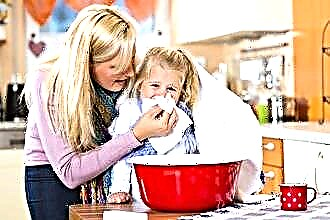Features of nutrition after a heart attack
In dynamics, the patient's condition and needs change rapidly:
- Immediately after acute myocardial necrosis, the body is weakened. In the intensive care unit, the patient does not need a large amount of food, since the appetite is reduced or absent.
A decrease in the volume of circulating blood reduces the load on the heart, which contributes to the acceleration of reparative processes. Therefore, the use of water in this period should be minimized.
You can allow the patient to dissolve frozen ice cubes to muffle thirst.
- In the next few days, it is necessary to bring the amount of fluid consumed closer to the physiological norm. The stabilization of hemodynamic parameters indicates a positive trend in this process. Nausea is a characteristic symptom of this period. To combat it, food is taken fractionally, in frequent small portions. In the early postoperative period, there is a risk of recurrence of myocardial infarction. Therefore, the food taken should be as neutral as possible. They will make her sparing:
- heated to the temperature of the human body;
- chopping before use;
- lack of a strong odor;
- neutral taste characteristics;
- elimination of products that contribute to gassing.
- At the end of five days from the onset of an acute episode, the patient should adhere to the principles of diet No. 10 and according to Pevzner. HER recommendations are:
- eat 6 times a day at a slow pace;
- exclude any physical activity before and after meals.
- Further, at the stationary stage, diet No. 10c (anti-atherosclerotic) is recommended. It is selected according to the indications of the lipid profile:
- if chylomicrons predominate, fat should be sharply limited;
- with an increase in cholesterol, only saturated lipids are limited;
- a large amount of pre-β-lipoproteins - halves the intake of carbohydrates.
It is worth spending fasting days once or twice a week.
- After discharge, you must continue to adhere to the principles of anti-atherosclerotic diet. The patient should:
- observe the regimen of meals (do not eat three hours before bedtime);
- reduce salt intake to 6 g per day;
- for the current month, completely exclude alcohol from the diet, do not abuse it in the future;
- change lifestyle in favor of a healthy lifestyle (smoking cessation, physical activity to normalize body weight).
The consequences of disruptions in the diet can be a repeated heart attack, stroke, angina attacks, metabolic complications.
A table characterizing the characteristics of nutrition after a heart attack.
| Period | Energy value (Kcal / day) | Proteins (g / day) | Fat (g / day) | Carbohydrates (g / day) | Liquid (l / day) | Salt (g / day) | Recommendations |
|---|---|---|---|---|---|---|---|
| 1-5 day | 1000-1200 | 60 | 30-40 | 180 | 0,7-0,8 | 0 | The patient eats the products in a grated form. |
| 5-20 day | 1600 | 60-70 | 50-60 | 220-250 | 0,9-1,0 | 1-3 | Take food at rest, slowly, 5-6 times a day. |
| After 20 days | 2000 | 85-90 | 70 | 290-330 | 1,1-1,5 | 5-6 | The motor mode is extended. |
Diet number 10 and its feasibility
For those who have suffered acute myocardial infarction, a dietary table No. 10 and according to Pevzner has been allocated. Its main principles are:
Limiting table salt to 3-6g per day. The requirement is dictated by the ability of sodium to retain water in the body, which leads to an increase in the volume of circulating blood. The load on the heart increases, the zone of necrosis may expand.
- The exclusion of products that have an exciting effect on the nervous system is necessary for the prevention of cardiac arrhythmias.
- Minimizing the consumption of foods high in saturated fat and cholesterol, which is important to maintain maximum vascular patency and prevent complications of atherosclerosis.
- Reducing the amount of fast carbohydrates (sugar).
- Intake of foods high in potassium in the development of heart failure. This mineral has broad antiarrhythmic and diuretic (reducing BCC) effects.
Making a menu for men
- From the first to the fifth day, all products are served to the patient in a grated form. Recommended for use:
- Carbohydrates: white dried bread, cereals (oat, rice, buckwheat), fruits (baked, grated).
- Proteins: boiled veal, chicken; lean fish (pike perch, cod), egg white (boiled or steamed).
- Fat: vegetable, a small amount of homemade butter.
- Fiber: fresh vegetables - grated carrots, boiled - mashed beets, zucchini, cauliflower.
- First courses: lean soups.
- Drinks: rosehip broth, coffee substitute, vegetable and fruit juices (in small quantities), dairy products.
- From 5 to 20 days, the same list of dishes is recommended, but the food is no longer chopped.
- In the fourth week and beyond, the diet menu after myocardial infarction for men expands. Allowed:
- yesterday's bread (white or rye) - up to 250 g per day;
- meat and fish (reduced fat content) in one piece;
- cheese (not too salty and fatty);
- a small amount of pasta;
- soaked herring;
- jellied meat and fish;
- lean ham;
- milk jelly, jam, honey, jelly (up to 50 g of sugar per day);
- fruits (kiwi, apples, pears) and berries without heat treatment;
- casseroles (curd);
- fruit drinks, fruit and vegetable juices;
- coffee drinks, tea (weak strength).
The list of meals should be kept in a conspicuous place. With the inclusion of imagination, it will not be difficult to come up with a recipe that meets the patient's tastes.
For a long period, patients are forced to take warfarin. The effect of an anticoagulant may vary depending on the diet:
Toning drinks (containing quinine) and alcohol enhance the effect of the drug, while foods rich in potassium (green vegetables, dried fruits) reduce the dilution capacity of the drug.
What foods should you exclude?
Meals that are high in salt, saturated fat, and fast carbohydrates are unacceptable. Excluded are: baked goods (rolls, pancakes, donuts, pastries, rolls, cakes, pies), fatty meat products (lard, boiled pork, brain, kidneys), fish (salted, smoked), broths (based on meat, mushrooms), chocolate , coffee, tomato juice.
In the early period, foods that contribute to gas formation are prohibited: tomatoes, cabbage, legumes.
What is recommended to enrich the diet?
You can and should eat after a heart attack products that promote rehabilitation:
- Fatty marine fish (omega-3 fatty acids reduce the risk of re-necrosis of the heart muscle).
- Yellow, red, green vegetables (antioxidants prevent the accumulation of toxic, under-oxidized metabolic products in the body).
- Dried apricots, raisins, dates (a source of potassium - a heart rate stabilizer).
- Seafood (contains trace elements that stabilize the rheological characteristics of the blood).
Conclusions
A history of myocardial infarction requires the same strict dietary approach as diabetes mellitus. For such patients, nutritional rules have been developed, which are presented in diet No. 10 according to Pevzner. Booklets with prohibited foods and examples of recommended dishes are also distributed among patients.
Skillfully prepared diet food will be tasty, albeit simple. The harm from fatty and sweet food at this stage is not comparable to the whims of appetite. It is necessary to completely abandon alcohol for the first month, and later give preference to its more noble types (wine) in limited quantities.
The principles of a diet after a heart attack and stenting for men and women are almost the same. The only overall goal of action is to lower blood cholesterol levels and prevent complications of atherosclerosis.



